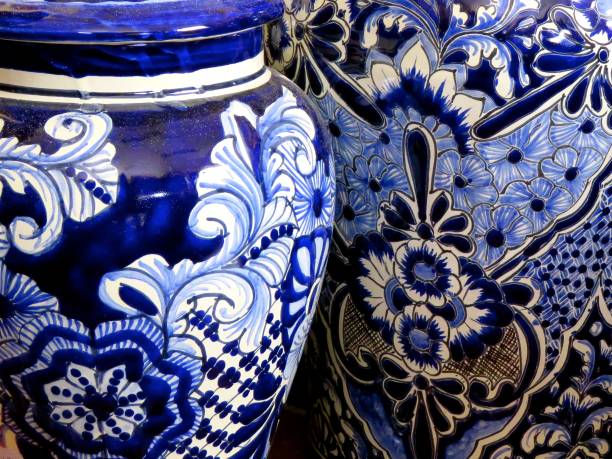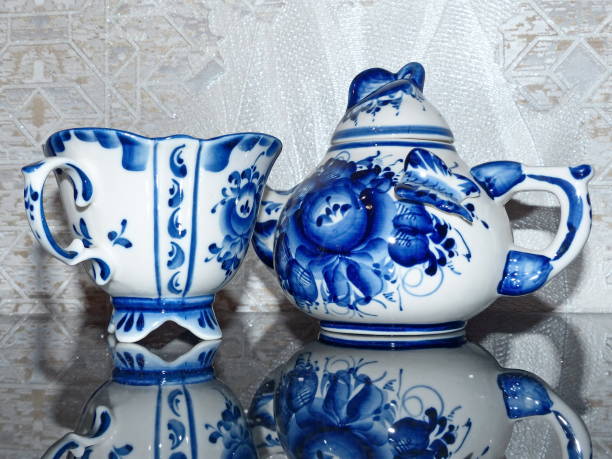Unlocking Ginger Jar Mysteries with Chinese Imperial Enamel
The ginger jars stand out among Chinese art’s many contributions to world culture because of their unique fusion of function and beauty. These porcelain pots were initially used to store spices in the early Ming period. Their use changed from practical to decorative, representing Chinese socio-cultural changes.

Chinese royal enamel helped ginger jars go from spice jars to art. Western collectors call this art form cloisonné, which includes applying colorful enamel to metal or ceramic pieces and burning them for a glossy, durable finish. The method arrived in China via the Silk Road and was first utilized in metallurgy before porcelain.
Enameling on porcelain peaked during the Qing period, especially under Emperor Kangxi. The imperial workshops added enamel porcelains under Kangxi, a passionate patron of the arts and sciences. The complex designs of these pieces sometimes included Chinese motifs like dragons, phoenixes, lotus blossoms, and other lucky symbols.
The sensuous shape and rich decorating of ginger jars are their aesthetic appeal. The jar body swells before narrowing into a short, thin neck with an elaborate cover. This attractive shape is functional. When keeping perishable products like ginger, these jars prevent air exposure to preserve the contents.
Imperial enamel colors are culturally significant. Blue and white porcelain were admired domestically and internationally. The blue color, made from Persia-imported cobalt oxide, was beautiful and meaningful. In Chinese culture, blue symbolizes immortality and the heavens, making blue and white porcelain lucky.
Chinese artisans used brilliant hues usually reserved for the affluent, in addition to blue and white. The 18th-century ‘famille rose’ and ‘famille verte’ palettes containing pink and green were designed for export and imperial use. These colors gave ginger jars visual appeal and complexity, making them luxurious.
Decorating ginger jars reflects Chinese culture and values. Floral motifs are widespread and symbolic. Chrysanthemums indicate longevity, peonies prosperity, and respect. These designs were added to ginger jars for symbolic meaning.
Beyond their aesthetic and symbolic value, ginger jars are culturally significant. The technological advances in Chinese porcelain manufacture are also evident. Chinese artists spent ages perfecting kiln temperature control to bond enamel to porcelain. This knowledge permitted the manufacturing of beautiful products and the consistency in quality that made Chinese porcelain famous worldwide.
In addition to being antiques, ginger jars inspire modern art and design. Collectors and Chinese art aficionados covet them for their historical and cultural significance.
Ginger jars are artifacts of Chinese imperial enamel, science, and art. They illuminate Chinese history by reflecting their times’ social, technological, and creative storylines. Studying and appreciating these pieces reveals Chinese art’s complexity and cultural heritage.
Yes, ginger jars are as much about transforming a helpful product into art as they are about Chinese culture and the arts’ vital place in it. These jars, colorful storytellers, reflect the imperial courts, talented artisans, and reverent collectors of centuries past. Ginger jars continue to fascinate and excite as we discover the secrets hidden beneath their enameled surfaces.
Preserving Elegance: Antique-Style Porcelain Care
Antique-style porcelain collectors must take care of their possessions. Antique-style porcelain collections admire ginger jars for their rich history and complex decorations. These ancient Chinese spice jars, now decorative objects, need special care to maintain their beauty and structural integrity.
Handle porcelain carefully to preserve it, especially ginger jars, which are historically and artistically valuable. Porcelain chips, cracks, and breaks due to its fragility. Lift these products with both hands and hold them by the body, not the handles or lid, which can be delicate.
Environmental conditions affect porcelain preservation. Extreme heat and humidity can cause the porcelain to expand and compress, cracking or crazing(fine glaze cracks)—display or store porcelain in a stable atmosphere with controlled humidity, ideally 50%. Antique porcelain should be kept from heat sources such as radiators, stoves, fireplaces, drawers, fits, and rapid temperature changes.
Light, especially sunlight, can damage antique porcelains. Over time, ultraviolet radiation can fade painted details and degrade porcelain glaze. Ginger jars should be displayed or kept out of the sun. UV-filtering glass in display cabinets protects porcelain from harmful light while allowing viewing and appreciation.
Cleaning ancient porcelain requires care and appropriate materials. To reduce handling concerns, TGinger jars should be cleaned rarely. A gentle, lint-free cloth soaked with distilled water should be used for cleaning. Avoid tap water because minerals can deposit on porcelain and damage its shine. A mild soap and distilled water mixture can remove harder stains or grime, but always use a soft brush like a new paintbrush or baby toothbrush.
After washing, rinse the porcelain with distilled water to eliminate soap residue, which can attract dust and damage the glaze—air-dry porcelain on a soft, absorbent cloth. Avoid heat and direct sunshine when drying to avoid uneven drying and damage.
If you want to preserve precious or fragile artifacts, consider professional conservation. The conservator can fix cracks, missing parts, and glaze damage. These experts employ specific methods and materials to restore porcelain to its original condition or near to it without damaging its integrity or historical value.
Ginger jars and other porcelain objects must be packed appropriately for storage. First, wrap each item in soft tissue paper, then bubble wrap. Newspapers and colored tissues can discolor ceramics. Items should be filled in solid boxes with foam or bubble wrap to prevent movement. Each box should be labeled fragile for safe handling.
Insurance is another concern for antique porcelain enthusiasts. Insurance can protect your collection from unintentional damage or loss. Professional assessments help keep insurance values current and reflect the collection’s market value.
Participating in collector and specialist networks can also provide advice on antique porcelain maintenance and preservation. Forums, shows, and organizations for porcelain collectors are great places to learn about preservation procedures and meet specialists.
In conclusion, ginger jars and other antique-style porcelain require careful handling, correct environmental conditions, delicate cleaning, and knowledgeable storage. Follow these tips to keep your treasures in perfect condition for future generations.




